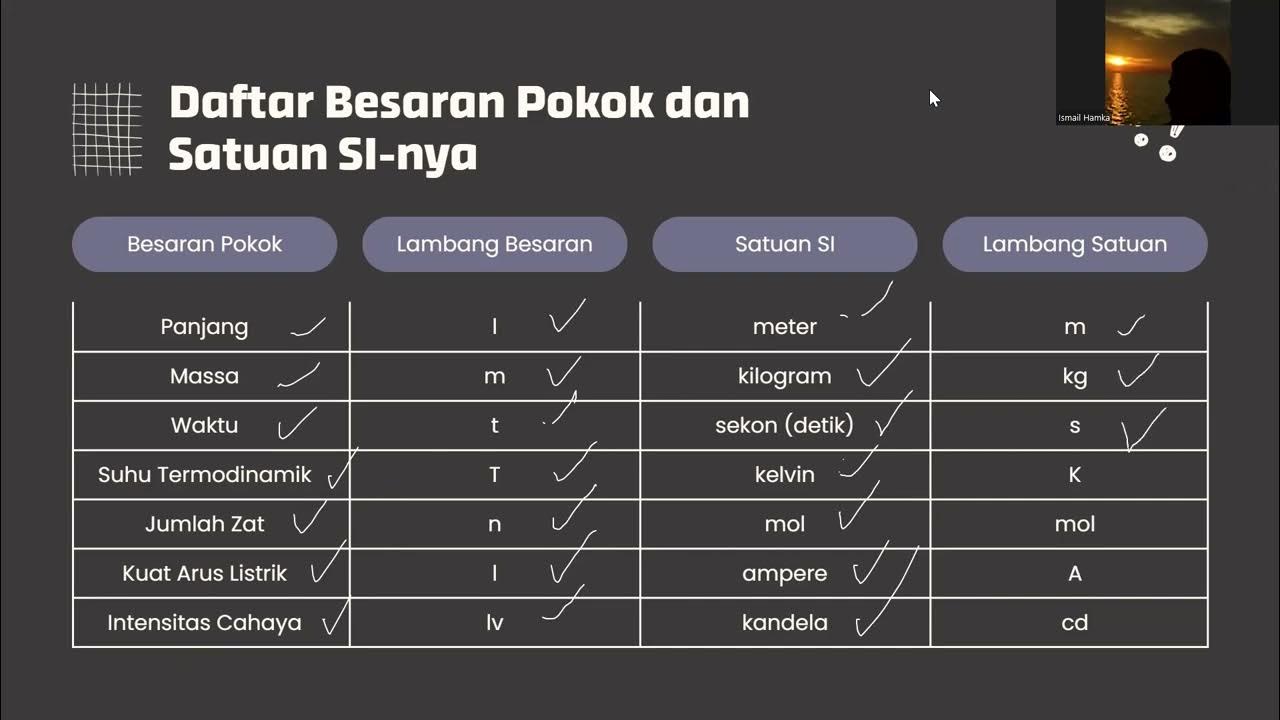Satuan Tidak Baku (Mengukur Panjang) | Video Pembelajaran
Summary
TLDRIn this educational video, viewers are introduced to non-standard units of measurement for length, such as jengkal, hasta, depa, telapak kaki, and langkah kaki. The video explains how these units vary from person to person and are not standardized, highlighting their differences in size. It encourages the audience to compare these units in terms of length and provides practical examples of how they can be used to measure different objects around the house. The fun and interactive approach aims to teach kids about non-standard measurements in an engaging way.
Takeaways
- 😀 Different units of measurement are used for length, such as Jengkal, Hasta, Depa, Telapak Kaki, and Langkah Kaki.
- 😀 These units are referred to as 'non-standard units' because their lengths vary from person to person.
- 😀 Jengkal, Hasta, and Depa are examples of non-standard units that are commonly used to measure length.
- 😀 Non-standard units are called 'tidak baku' in Indonesian because each person has a different length for these units.
- 😀 The length of a Jengkal is shorter compared to the length of Hasta, and Deva is the longest.
- 😀 The units of length can be ordered from shortest to longest: Jengkal, Telapak Kaki, Hasta, Langkah Kaki, and Deva.
- 😀 Jengkal is used to measure short lengths, such as the length of a pencil.
- 😀 Depa is used to measure the length of objects like a blackboard or a room.
- 😀 Langkah Kaki is used to measure distances, such as from a tree to a flagpole.
- 😀 Non-standard units like Hasta and Telapak Kaki are often used for measuring larger lengths, such as a rope or a table.
- 😀 The script encourages experimenting with non-standard units to measure objects at home, promoting hands-on learning.
Q & A
What is the meaning of 'non-standard units of measurement' mentioned in the transcript?
-Non-standard units of measurement refer to units like the span of a hand or foot, which can vary from person to person, unlike standardized units like meters or centimeters.
Why are units like jengkal, hasta, and depa called 'non-standard'?
-These units are called 'non-standard' because their measurements differ depending on the individual, such as the length of a person's fingers or feet.
What are some examples of non-standard units of measurement given in the script?
-The examples given are jengkal, hasta, depa, telapak kaki (foot length), and langkah kaki (footstep).
How does the length of different units compare according to the transcript?
-The transcript ranks the non-standard units from shortest to longest as follows: jengkal (shortest), telapak kaki, hasta, langkah kaki, and depa (longest).
What is the purpose of measuring things with non-standard units, according to the script?
-Non-standard units are used for measuring objects when standard tools like rulers aren't available. They can be used to measure various items at home or in other practical settings.
How can you measure the length of an object using jengkal or depa, for example?
-To measure an object, you can use your own body parts like the length of your hand (jengkal) or arm (depa) to estimate the object's size.
What does the script suggest we use to measure the length of a table?
-The script suggests using 'hasta' (the length of your arm) to measure the length of a table.
What could be a potential limitation of using non-standard units for measurement?
-A limitation is the inconsistency in measurement due to the differences in body sizes among individuals, which can lead to inaccurate or imprecise measurements.
How can you use a non-standard unit of measurement at home according to the script?
-You can measure various objects at home, such as the length of a table, the distance from a tree to a flagpole, or the length of a rope using non-standard units like jengkal or hasta.
What is the fun or practical aspect of using non-standard units of measurement, as implied in the script?
-The fun and practical aspect is that it allows you to measure things in a hands-on and personalized way, using body parts, and it can be a creative activity when standard measuring tools aren't available.
Outlines

This section is available to paid users only. Please upgrade to access this part.
Upgrade NowMindmap

This section is available to paid users only. Please upgrade to access this part.
Upgrade NowKeywords

This section is available to paid users only. Please upgrade to access this part.
Upgrade NowHighlights

This section is available to paid users only. Please upgrade to access this part.
Upgrade NowTranscripts

This section is available to paid users only. Please upgrade to access this part.
Upgrade Now5.0 / 5 (0 votes)





